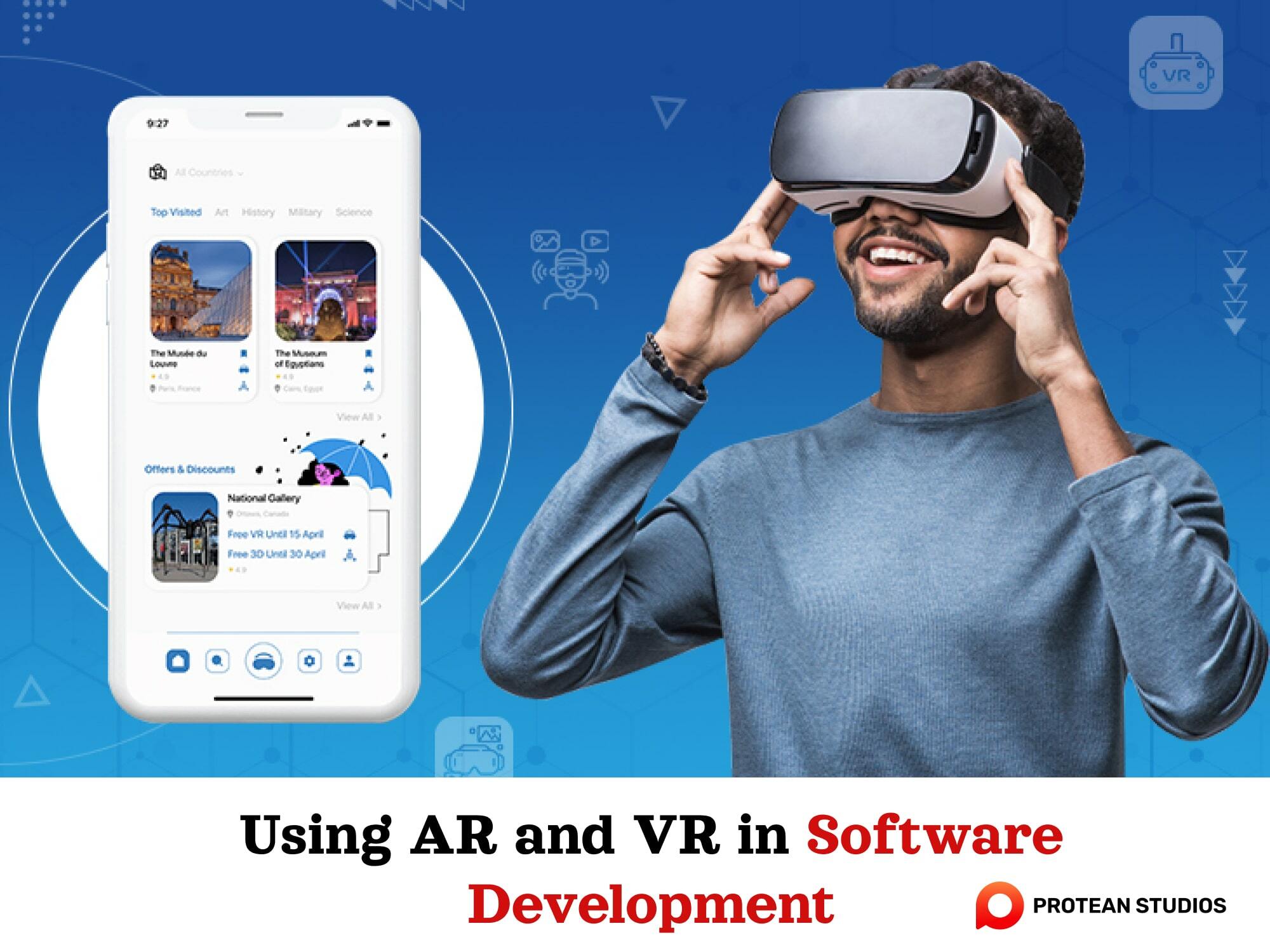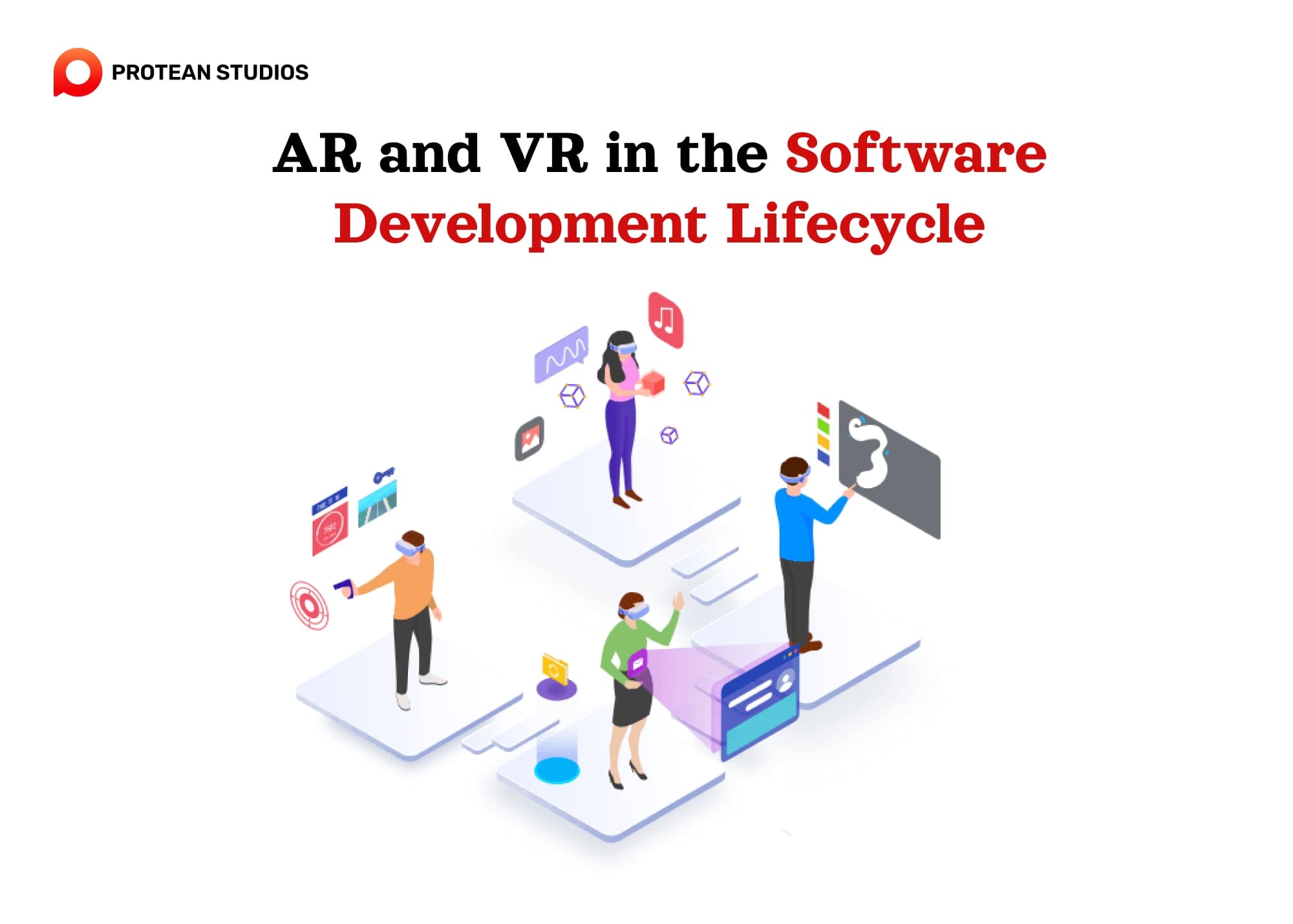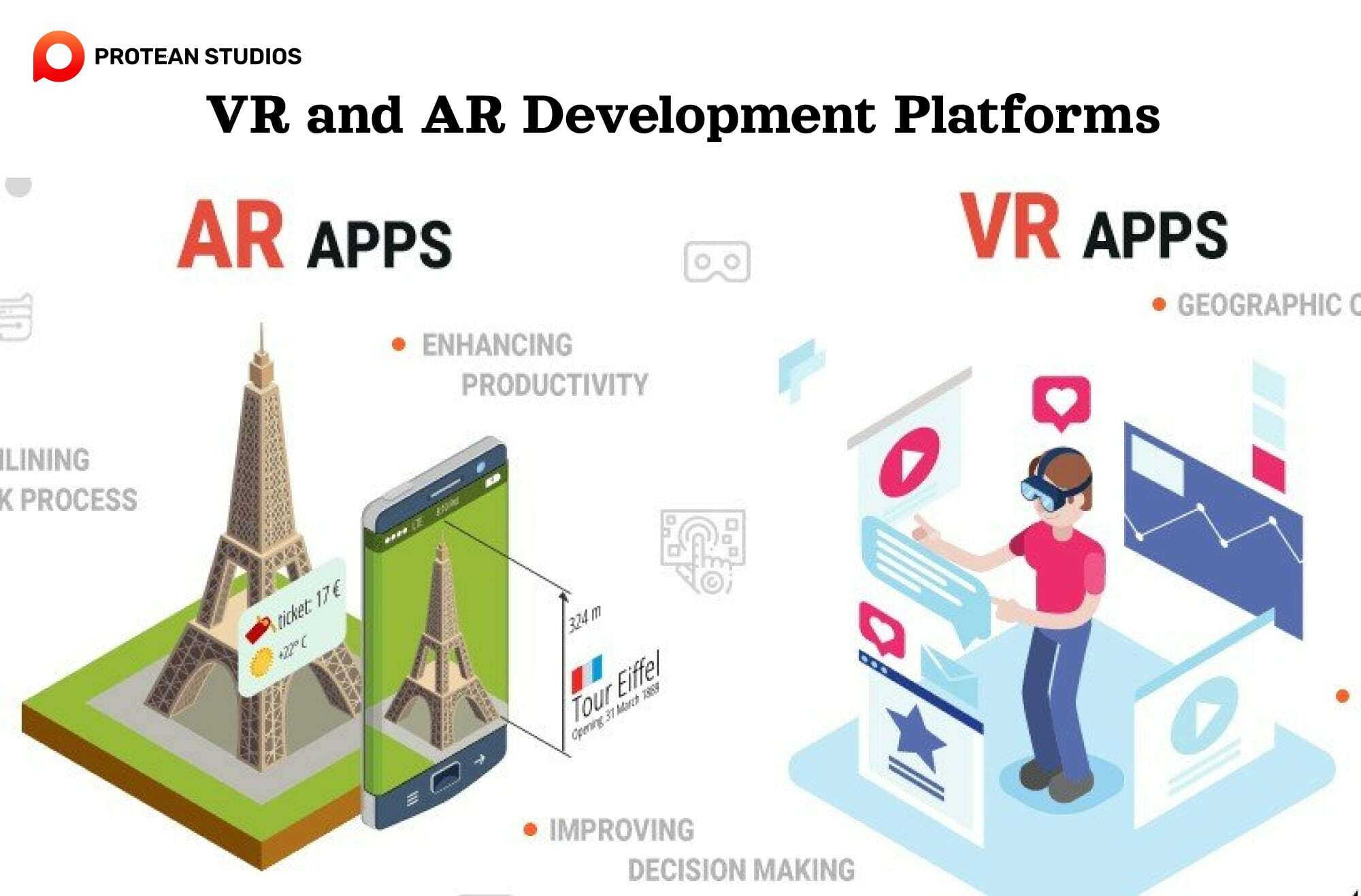Augmented Reality and Virtual Reality are changing the way we experience the digital world. These technologies let us interact with digital content in new, exciting ways, making everyday tasks more engaging and fun. This blog is your go-to guide for learning how to use these amazing technologies in your software projects. Whether you're an experienced developer or just starting out, we will teach you how to create stunning AR and VR applications that stand out.
Why should business use AR and VR in software development
Using AR and VR in software development offers many benefits:
Increased Productivity and Efficiency: AR and VR provide developers with innovative tools and environments that enhance their workflow. For instance, AR code visualization tools help developers understand and troubleshoot code better, while AR training tools allow users to learn new software features at their workstations.
Improved Software Quality: AR and VR enable more realistic testing and debugging of applications. VR simulation environments, for example, can test software in real-world scenarios, leading to higher quality products.
Reduced Training Costs: AR and VR offer more effective training methods, cutting costs. AR training tools can teach users how to use new software features without them having to leave their workstations.
Innovative Development and Usage: AR and VR introduce novel ways to develop and use software. AR applications can provide real-time task instructions, while VR applications create immersive training and learning experiences.
AR and VR have the potential to revolutionize software development by enhancing productivity, improving quality, reducing training costs, and enabling innovative applications.

Learn more: VR (Virtual Reality) Vs. AR (Augmented Reality): Predicting Future Success
AR and VR in the software development lifecycle
Augmented Reality and Virtual Reality can enhance the software development lifecycle in various ways. Here’s a detailed look at how AR and VR can be utilized at each stage:
1. Requirements gathering
This crucial stage involves developers working with stakeholders to understand their needs for the software application.
AR and VR Integration:
Prototyping and Simulation: AR and VR can create prototypes and simulations, allowing stakeholders to test and provide feedback on requirements early on.
Example: An AR prototype of a mobile app can show stakeholders how the app will work in real-world scenarios, while a VR simulation of enterprise software can prove its use in day-to-day tasks.
2. Design
Once requirements are gathered, developers design the software, focusing on its architecture, user interface, and user experience.
AR and VR Integration:
Immersive Design Experiences: AR and VR enable developers to visualize and interact with designs realistically, helping identify and fix design issues.
Example: A VR design tool can create a virtual prototype of a new application, allowing developers to explore and interact with it as if it were a real-world object.

3. Development
During this stage, developers write code and test the software to ensure it functions as expected.
AR and VR Integration:
Enhanced Coding and Debugging: AR and VR tools and environments can make coding, testing, and debugging more efficient.
Example: An AR code visualization tool can overlay code onto the real world for better understanding and troubleshooting, while a VR simulation environment can test applications in realistic scenarios.
4. Deployment
After development and testing, the software is ready for deployment to users, involving installation and user training.
AR and VR Integration:
Training and Support: AR and VR can create effective training materials and support tools.
Example: An AR training tool can teach users new software features at their workstations, and a VR training simulation can train users on complex tasks using the software.
Getting Ready to Be a VR and AR Software Developer
If you're a software developer looking to venture into VR and AR, there are specific skills and tools you should consider.
Essential Skills for VR and AR Development
Developing for VR and AR demands a diverse skill set. Strong programming skills in languages like C# or C++ are essential for building immersive experiences. Besides, knowledge of 3D modeling, game development, and user experience design is invaluable in creating compelling content.
Read more: Understanding Software Development: Definition, Procedures, And Types
VR and AR Development Tools and Platforms
Several tools and platforms can help you develop for VR and AR. Unity and Unreal Engine, two leading game development platforms, offer exceptional support for creating interactive virtual experiences. Besides, development frameworks specific to AR, such as ARCore (for Android) and ARKit (for iOS), are worth exploring.

Becoming a VR and AR Developer: Shaping the Future
As a software developer, you play a crucial role in advancing VR and AR technology. By pushing the boundaries of possibility, you can help create more compelling and realistic virtual experiences. Collaborating with designers, artists, and specialists from different fields will foster innovation and drive the future of VR and AR. You can see more in this blog: AR Vs VR: What's Next For The Future?
Ethics in VR and AR Development
Like any transformative technology, VR and AR come with ethical concerns. As a developer, it's essential to consider aspects such as data privacy, user safety, and the potential psychological impact of immersive experiences. Striving for ethical practices ensures the responsible development and use of VR and AR technologies.
By incorporating AR and VR into their software development processes, businesses can unlock new opportunities. And then, enhance product quality, and drive growth and success.
As the future of VR and AR unfolds, it offers endless opportunities for software developers. By equipping yourself with the right knowledge, skills, and tools, you'll be at the forefront of this exciting digital revolution. Embrace the challenge, stay curious, and get ready to shape the future of VR and AR.




